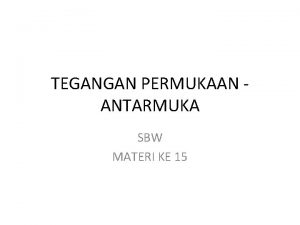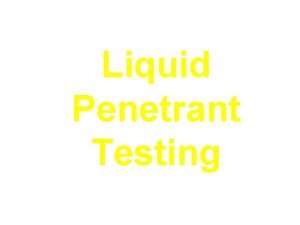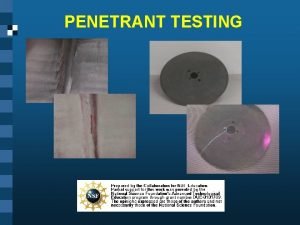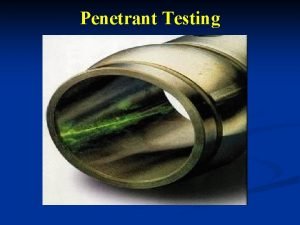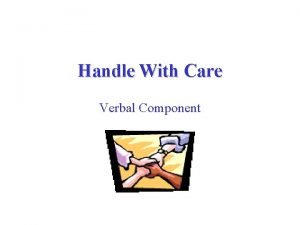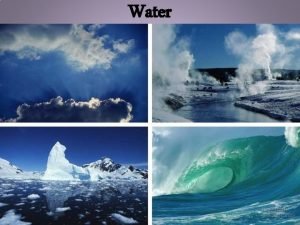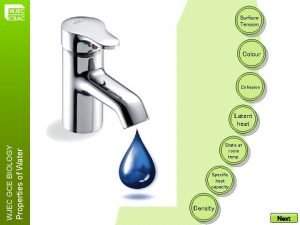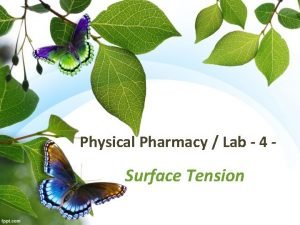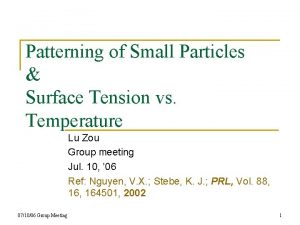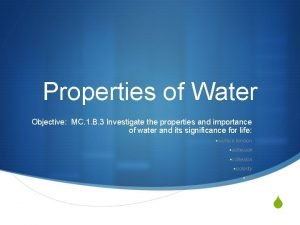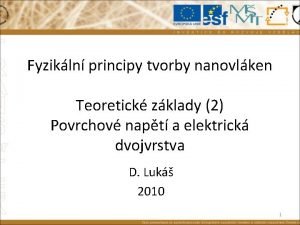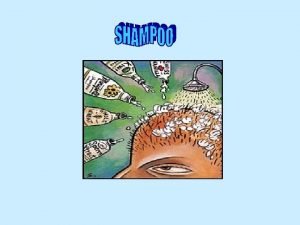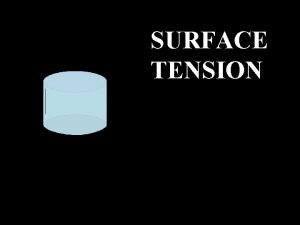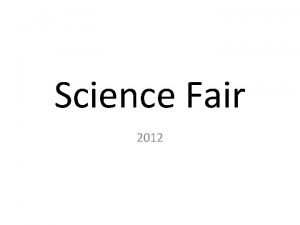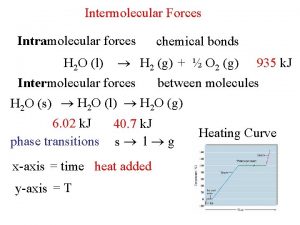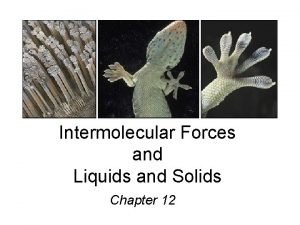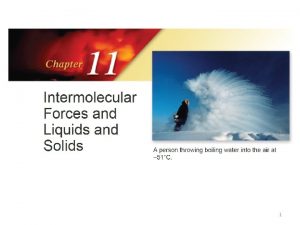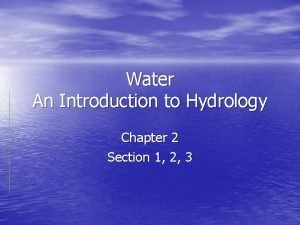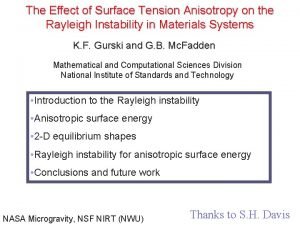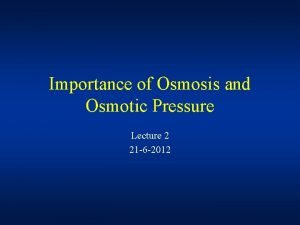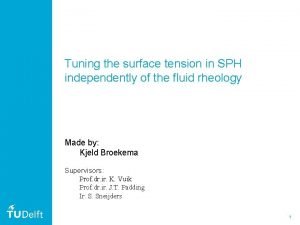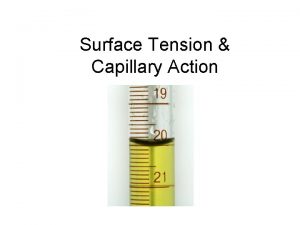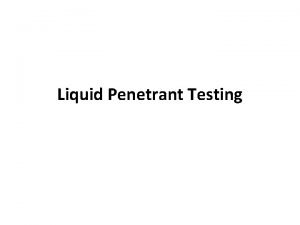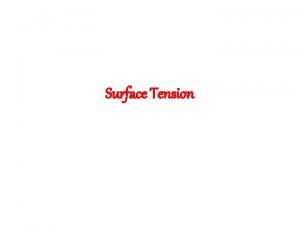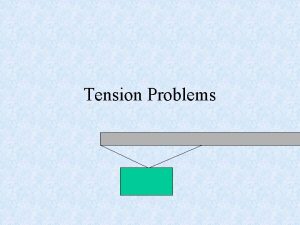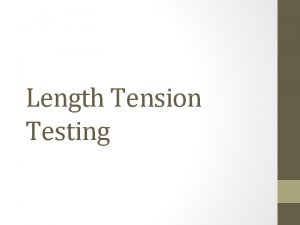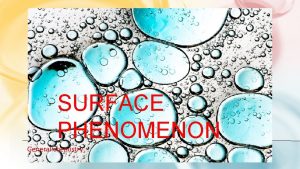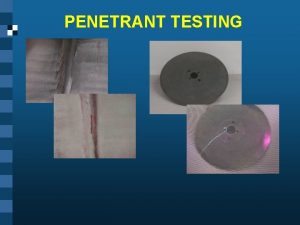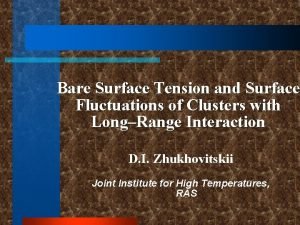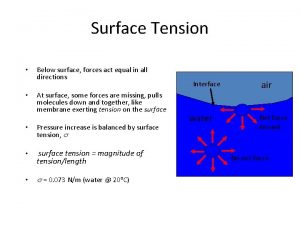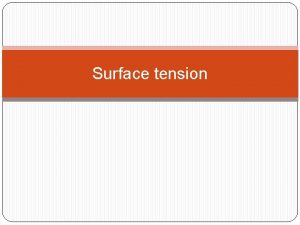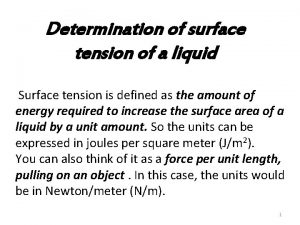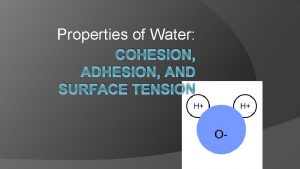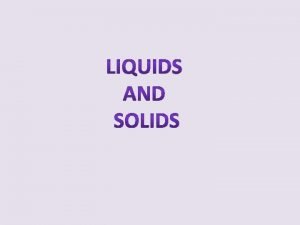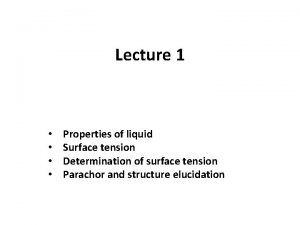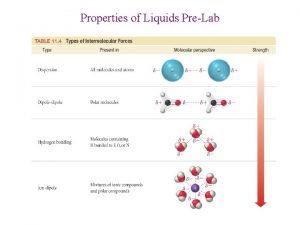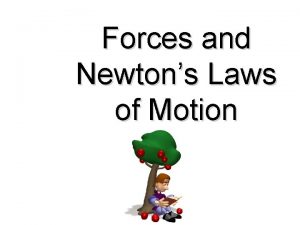Penetrant Testing Penetrant Properties n Surface Tension and






























- Slides: 30

Penetrant Testing

Penetrant Properties n Surface Tension and Wetting ability P = 2 S Cos W A good penetrant should have high surface tension and a small contact angle

Viscosity Affects the rate at which penetrant enters a defect The more viscous the penetrant the slower it enter openings OIL GREASE

Flash Point Temperature recorded Flash point The minimum temperature at which liquid will gives off enough vapour which will flash with an sparkplug application of small flame thermometer vapour Closed container Liquid under test water PENSKE MARTEN CLOSED CUP TEST Heat

Penetrant Properties Specific Gravity n Penetrant has Lower SG than water : 0. 9 n Reason: If penetrant used in tank water will be on the bottom Typical Penetrant Tank Water Penetrant Wire mesh Contaminants Drainage

Specific Gravity Checked using a HYDROMETER Scales Water Penetrant Balast / weight

Penetrant Line

Penetrant Properties Volatility n High volatility = High rate of evaporation n A good penetrant has low volatility

Penetrant Properties Chemical inertness Maximum levels for sulphur, halogens and sodium are specified Sulphur and halogens may cause stress corrosion or intergranullar corrosion Halogens: Very reactive elements. Examples: Chlorine Iodine Bromine Fluorine

Penetrant Properties Solubility Penetrant must hold sufficient dye in solution at ambient or high temperatures n Solvent Ability Must be able to remove penetrant from specimen n

Penetrant Properties Tolerance to Contaminants n Health Hazard Toxicity Odour Skin contact n Availability and Cost n

System classification PENETRANT n Colour contrast n Fluorescent n Dual REMOVAL n Water washable n Solvent n Post emulsifiable

Penetrant Systems PENETRANT n n n Colour contrast Fluorescent Dual REMOVAL DEVELOPERS n Solvent n Dry powder n Water washable n Aqueous n Post emulsifiable n Non-Aqueous

Control Checks n Overall system performance

Overall System Performance n n n Quench cracked aluminium alloy block Chromium plated cracked test panel Cracked test piece

COMPARATOR BLOCK ARB BLOCK- Aeronautical Registration Board Block Two sided aluminum block which been quenched – to produce thermal cracks May be used to check/compare performance of penetrant chemicals (penetrant, emulsifier, developer)

How to use the ARB block NEW OLD Two different penetrant applied on each section of block The excess penetrant is removed and developer applied Indication are observed Now process is repeat with the penetrant applied to different section OLD NEW OLD PENETRANT IS WEAK OLD PENETRANT IS OK

CHROMIUM PLATED BLOCK TAM panel or SHERWIN panel Section for checking effectiveness of cleaning Section for checking sensitivity Cleaning not effective Less sensitive

Control Checks Overall system performance n Water wash temperature and pressure n Colour intensity n Penetrant remover n Developer n UV lamp output n UV monitor n Water tolerance n

Control Checks - Frequency Overall system performance n Water wash temperature pressure n Colour intensity n Penetrant remover n Developer n UV lamp output n UV monitor n Water tolerance n Dailyand Weekly Daily Weekly Monthly Annual Weekly

Maintenance Checks Tank levels n Equipment cleanliness n Airline cleanliness n Processing units n UV lamp maintenance n Clean tanks n

Penetrant Systems PENETRANT n n n Colour contrast Fluorescent Dual REMOVAL DEVELOPERS n Solvent n Dry powder n Water washable n Aqueous n Post emulsifiable n Non-Aqueous

BS EN 571 Penetrant n n n Type II Fluorescent Colour contrast Type III Dual Removal n n n Method A Method B Method C Method D Method E Water Lipophilic Emulsifier Solvent Hydrophilic Water and solvent

BS EN 571 Developer n Form a Form b n Form c n n Form d n Form e Dry Water soluble Water suspendable Solvent based Peelable Removal n n n Method A Water Method B Lipophilic Emulsifier Method C Solvent Method D Hydrophilic Method E Water and solvent

BS EN 571 n Fluorescent n Type I n Solvent removable n Method C n Solvent based developer n Form d

Mil-L-25135 Group I n Group III n Group IV n Group VII n Solvent removed, Visible Post emulsified, Visible Water washable, Fluorescent(L) Post emulsified, Fluorescent(M) Post emulsified, Fluorescent(H) Solvent removed, Fluorescent

Mil-L-6866 Type I Fluorescent Method A Water Method B Post emulsifiable Method C Solvent n Type II Method A Method B n Method C Visible Water Post emulsifiable Solvent

Selection of System Nature of discontinuities (size and type) n Geometry and intricacy n Surface condition n Component material n Size and position n Equipment and expertise available n Cost n Number of components to be tested n

Selection of System n Inspection of a large number of threaded components n What method will you select and why ? Fluorescent water washable with dry powder developer n n n Fluorescent for mass inspections Water washable more suited than solvents to batch inspections Post emulsifiable difficult to remove from threads

Selection of System n Inspection of turbine blades for fatigue cracks What method will you select and why ? n Fluorescent post emulsifiable with nonaqueous developer n Fluorescent more sensitive than colour contrast Post emulsifiable more sensitive than water washable Non-aqueous developer most sensitive n n
 Spin coat
Spin coat Faktor-faktor yang mempengaruhi tegangan permukaan
Faktor-faktor yang mempengaruhi tegangan permukaan Limitations of liquid penetrant testing
Limitations of liquid penetrant testing Red penetrant
Red penetrant Characteristics of penetrant
Characteristics of penetrant Transference psychoanalysis
Transference psychoanalysis Bill nye properties of water
Bill nye properties of water Surface tension
Surface tension Surface tension in physical pharmacy
Surface tension in physical pharmacy Surface tension vs temperature
Surface tension vs temperature Strong surface tension
Strong surface tension Dimensional formula of surface tension
Dimensional formula of surface tension Is a shampoo a colloid
Is a shampoo a colloid Surface tension
Surface tension How does water purity affect surface tension hypothesis
How does water purity affect surface tension hypothesis Surface tension intermolecular forces
Surface tension intermolecular forces Surface tension intermolecular forces
Surface tension intermolecular forces Dipole induced dipole forces examples
Dipole induced dipole forces examples Surface tension
Surface tension Surface tension dimension formula
Surface tension dimension formula Surface tension
Surface tension Hydrostatic pressure vs osmotic pressure
Hydrostatic pressure vs osmotic pressure Sph surface tension
Sph surface tension Positive vs negative testing
Positive vs negative testing Cs 3250
Cs 3250 Wet curved surface area
Wet curved surface area What is lateral face
What is lateral face What is intensive in chemistry
What is intensive in chemistry Physical property and chemical property
Physical property and chemical property What is domain test
What is domain test Motivational overview of logic based testing
Motivational overview of logic based testing

